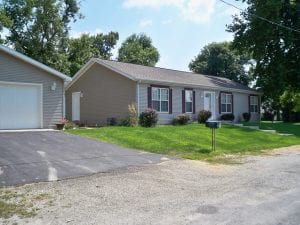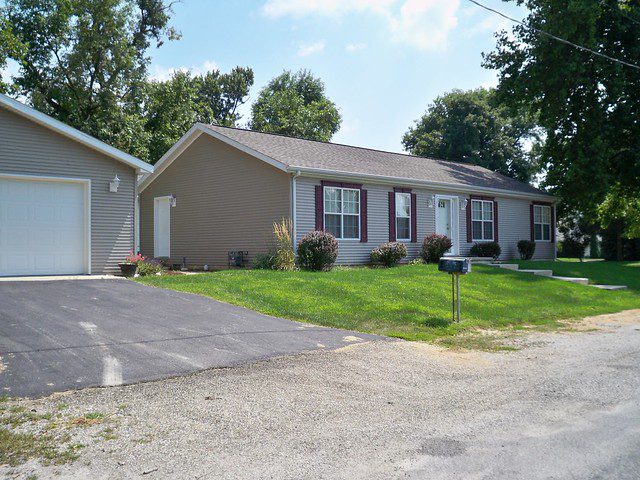
Photo via flickr, CC BY-NC-SA 2.0
In March, C & C Community in Billings, Montana, became the 11th resident-owned manufactured housing community in the state. With technical assistance from ROC USA partner NeighborWorks Montana, the conversion from a traditional land-lease community to a cooperative took homeowners about six months to accomplish. Manufactured homeowners are particularly vulnerable to market predations because they own their homes but pay a lot rent to the community owner. In nearly every state in the U.S., lot rents are unregulated. C & C Community’s transition to a cooperative helps secure the financial futures of the 60 families who live there; families who, when compared to the land-lease model that governs about 98 percent of all manufactured and mobile home communities, will not face the threat of excessive rent increases, closure, or displacement.
For owners of manufactured homes, the risk of onerous lot rent increases and the fear of eviction are more threatening than ever as private equity and other types of investors enter the market. The destabilizing impact of these new players has been raised by a few outlets, most notably on John Oliver’s “Last Week Tonight,” which recently aired a segment on this topic.
Investments in manufactured and mobile homes communities are among the most profitable in the real estate sector. While a relatively recent trend, most major investors have entered this market in the last five years or so. Wall Street’s increased investment in manufactured housing communities will lead to rent increases and reduce home values—major market players have said so themselves. On an earnings call in April, Sun Communities CEO Gary Shiffman stated, “some of the things that are taking place as the industry is attracting so much capital, driving the cap[italization] rates so low and we’d speculate that that is causing some of those new entrants to the industry to try and push up their returns on their investments.” Sun Communities is the largest operator of manufactured housing communities in the United States. There are approximately 45,000 communities in the country, and though no good data exist on national investor purchases, these new players are clearly raising community sale prices at the expense of homeowners.
All potential homeowners have a monthly housing budget. For a manufactured homeowner, that may include a lot rent and a loan payment. The higher the lot rent, the less money there is for a loan payment. This decreases the purchase price a potential buyer can afford, ultimately reducing the seller’s home equity.
Simply put, since there is so much money chasing a finite number of deals (fewer than 10 new communities are developed in any given year, and likely more are closed), the rapidly increasing purchase prices are pushing down these deals’ capitalization rates, which is the standard measurement of expected return on these types of investments. So how do investors boost their return on investment? By raising lot rents and reducing services, such as eliminating amenities like community rooms and playgrounds, and master-metered utilities, a common arrangement through which all resident utility use is billed to the community.
One community owner, Havenpark Capital, has earned a lot of attention for doing just this. After buying five mobile home parks in Iowa, the company announced rent hikes that ranged from 24 percent to 69 percent. “Market forces dictated the purchase price . . . which went far beyond what the current income on rent provided,” the company stated. When you make a real estate purchase without the means to pay for it, you raise rents as quickly as possible. As Havenpark noted in a now private section of its website, it “only acquire[s] properties that generate a significant target cashflow from day one AND have ample upside opportunities that will allow us to significantly raise the value and cashflow of the property in ANY market—good or bad.” Congress has followed up with an inquiry. It needs to do more, as does Iowa, which unlike 19 other states, has no real tools to facilitate resident ownership.
Interestingly, Havenpark supports the Manufactured Housing Community Sustainability Act (H.R. 2832), a bill that would authorize a capital gains tax credit for community owners who sell to residents and nonprofits. This isn’t an idea out of left field. Montana, for example, has a similar measure for state taxes.
Prosperity Now, where I work as a senior fellow, is working to advance this legislation, as it would incentivize the permanent preservation of this type of housing.
The manufactured housing industry is often late to reforms, which is why there wasn’t a federal building code for this sector before 1976. The mobile home industry grew out of the travel-trailer sector that emerged after World War II, and pre-1976 mobile homes were largely unregulated and posed a hazard to residents, especially as the homes aged and conditions worsened. The industry needed a regulatory framework on construction in 1976, and it needs a new framework for community ownership and operation in 2019. H.R. 2832 is a start.
Congress is also considering the HUD Manufactured Housing Modernization Act (S. 1804), a bipartisan bill Prosperity Now helped draft, which would require that jurisdictions that receive HUD funds review the role of manufactured housing in their communities’ affordable housing landscape. Some segments of the industry now support it despite offering a misleading statement that traditional land-lease communities are as secure and safe as mission-driven ownership models like cooperatives.
Such a change would likely attract new resources for first-time manufactured homebuyers, or community infrastructure improvements. S. 1804 could also foster partnerships that have often eluded the sector. More local and state officials might recognize the value of preserving manufactured home communities that are threatened with closure. Local planners may see that manufactured homes are a good fit for urban infill, as has been done in communities in a few places in the U.S., such as Chino, California.
Missions can also align. Prosperity Now partners with housing-focused organizations like NeighborWorks Montana and ROC USA. Another partner, Family Promise, operates its Partners in Housing program, which leverages manufactured and mobile homes as transitional housing for families who are experiencing trauma and crises. We have helped connect Family Promise affiliates with cooperative communities in Minnesota and in Montana and hope to expand this to other states. Family Promise of Yellowstone Valley and C & C Community have fully embraced this partnership and its potential through their support of three families at the community. Affordable, stable homeownership is fundamental to the success and well being of all families, but too often families facing challenges are vulnerable to unfair evictions, rent increases, and uncertainty. An affordable home in a welcoming cooperative community is a big step in addressing this.






Doug, Let’s hope that those super low cap rates also entice developers to build new parks including co-op and subdivided parks. With investors and residents paying increasingly exorbitant prices for old parks, new parks should pencil out for more developers.
Enticing developers is not the problem. Exclusionary zoning, land and infrastructure costs, local ordinances prohibiting any and all factory built housing, NIMBYs and elected officials who are blatantly prejudicial to the housing option are the obstacles standing in the way of new development.